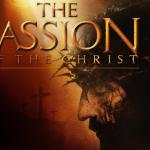With his paintings The Forgotten Man (2010), One Nation Under God (2009), and most recently, Wake Up America! (2011), Jon McNaughton aims to leave little room for interpretation. In their remarkable didacticism—an America on the brink of political and moral disaster—McNaughton’s works serve to call the nation to arms, or at least to the polling booths. The impression is one of thorough legibility, of history as a long list of epigraphs. The artist will have nothing of ambivalence or illegibility. “Everything about [One Nation Under God] is symbolic,” McNaughton frankly explains.
As if dusted off from some Smithsonian storage unit, the crowded regimentation of figures, especially the array of hands and arms, recalls the theatricality of fiberglass scenes in a history museum or commemorative engravings of Congressional celebrities that were popular in the nineteenth century.
However, by fully exploiting Internet technology on his website, these paintings are thoroughly twenty-first century creations. By placing the cursor on each figure, the viewer summons a detailed register of the artist’s comments, identifying the person and explaining why he or she is included. The device confirms my initial sense: these are images you read because they bear meaning, a solemn message that was the principal engine of their creation. Nothing in the images escapes the cursor’s errand.
There are precisely fifty stars in the striped heavens radiating from Jesus’ head in One Nation Under God. And the leaden skies above the White House in The Forgotten Man form “an ominous dark cloud hang[ing] over this country in the form of an uncontrollable Federal Deficit with crushing debt obligations.” In Wake Up America!, a heavy chain snakes through a crowd captivated by President Obama, who delivers a stump speech in falling streams of money. Enslaved to government handouts and excessive spending, the people are depicted as having traded national sovereignty for a new Babylonian captivity.
The history of political imagery, even fine art imagery, is mottled with dense portraits of orators, heroes, politicians, villains, and martyrs frozen forever in postures keyed to their deeds and memorable words. The Capitol building in Washington, D.C. enshrines dozens of these marble and bronze figures. There, visitors can find statues of Abraham Lincoln and a bust of Martin Luther King, Jr., captured in moments of high oratory or visionary musing. These works of art are meant to convey to the ages the ideas the figures championed in legislation or national crisis.
Read the rest here















